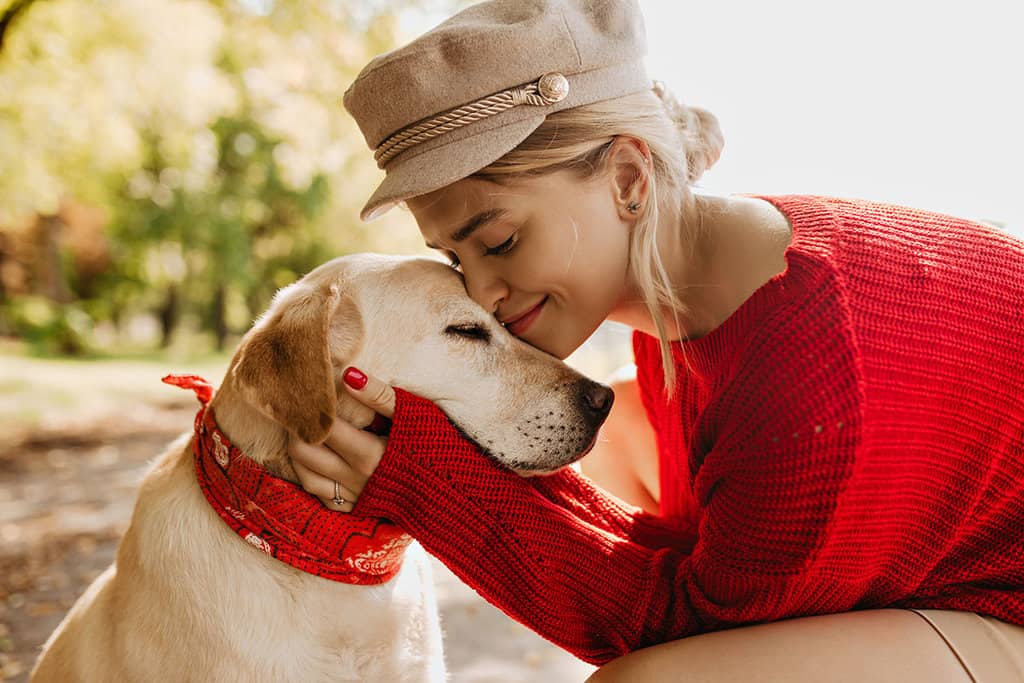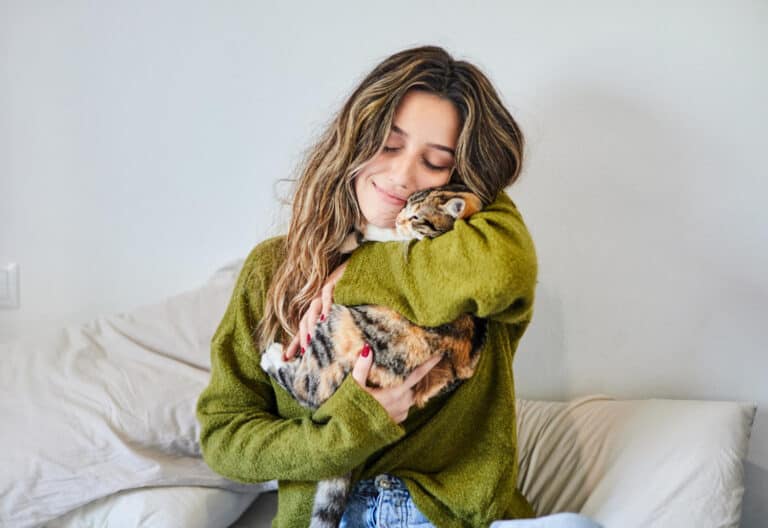Growing up as an only child can be lonely at times. Luckily, I had a four-legged partner in crime named Kelly. A bundle of energy, always up for our next adventure. Kelly had a face that could melt even the coldest of hearts. And she could beg like a champion. If Puss in Boots was a dog, it would have been Kelly. Can you imagine how hard it is to say no to such a gifted actress?
If you love your pet, you better practice saying that word!
Chocolate, particularly dark chocolate and unsweetened baking chocolate, is toxic to dogs. It can cause vomiting, diarrhoea, increased thirst and urination, and in severe cases, seizures, heart problems, and death. So how come our favourite comfort food can be their death sentence?
Well, that’s because chocolate contains a compound called theobromine. This is a stimulant similar to caffeine. Ever wondered why you feel so energetic after eating half a bar of that lush caramel-sea salt-chocolate? Now you know!
Theobromine is not as quickly metabolized by dogs as by humans, so it can build up to toxic levels in a dog’s system. In addition, dark chocolate and unsweetened baking chocolate have higher levels of theobromine than milk chocolate, which is why they are even more dangerous to dogs.
As a side note, dogs cannot taste the sweet taste of chocolate, so you really don’t do them any favours with a piece of your bar.
Theobromine belongs to a group of compounds called methylxanthines. It is found in cacao beans. Theobromine is a mild stimulant in humans and has diuretic and vasodilating effects. Dogs, however, metabolize theobromine much more slowly than humans. As a result, it can accumulate in their system and become toxic.
Symptoms of Chocolate Toxicity in Dogs: When to Seek Immediate Veterinary Care
Suppose you suspect that your dog has consumed chocolate or a product containing theobromine and is showing signs of toxicity. In that case, it is essential to seek veterinary care immediately. The sooner your dog receives treatment, the better their chances of recovery. Pay attention to the following symptoms:
❗ vomiting
❗ Diarrhoea
❗ Restlessness
❗ Muscle tremors
❗ An abnormal heart rhythm
❗ Seizures
Actions you can take immediately
While you’re on the phone with your veterinarian or waiting for a decision, you don’t have to sit still and do nothing. Here are some things you can do immediately:
🐶 1 – Remove the source: If your dog has consumed chocolate or a product containing theobromine, try to remove as much of it from their system as possible. You can do this by inducing vomiting or giving them activated charcoal.
🐶 2 – Call your veterinarian: Contact your veterinarian immediately and let them know what has happened. They will be able to advise you on the next steps and may ask you to bring your dog in for an examination.
🐶 3 – Observe your dog: Keep an eye on your dog for any signs of toxicity, such as vomiting, diarrhoea, restlessness, muscle tremors, an abnormal heart rhythm, and seizures.
🐶 4 – Provide supportive care: Depending on the severity of the situation, your veterinarian may administer activated charcoal to absorb any remaining theobromine, IV fluids to flush out the toxins, and other treatments as necessary to help your dog recover.
With chocolate, it is always better to be safe than sorry. So if you’re unsure if your dog has consumed chocolate, always call your veterinarian for guidance.
Alternatives for your ‘Dog in Boots’, begging for a snack
There are plenty! There are many safe and healthy treats you can give the ‘love of your life’ for Valentine’s Day or any other day. Here are a few options:
❤ Dog-specific treats: Many pet stores carry dog-specific treats made with natural ingredients and safe for dogs to consume.
🧡 Homemade treats: You can make dog treats at home using natural ingredients like peanut butter, pumpkin, and oatmeal.
💛 Fresh fruits and vegetables: Many fruits and vegetables are safe for dogs and can be a healthy treat option. And yes, dogs do enjoy fruits. Some popular options include carrots, apples, and blueberries.
💚 Cooked meat and fish: Cooked chicken, turkey, or lean cuts of beef or fish can make an excellent treat for your dog. Just make sure it’s thoroughly cooked and has no bones or grates. Those fragile chicken bones are a source of a whole other set of issues. I might tell you about that in another article. Oh, and leave the pork out too!
💙 Frozen Yogurt: You can make a frozen yoghurt treat with plain yoghurt, peanut butter and mashed bananas.
Going the extra mile for your furry friend
If you enjoy cooking, there are tons of recipes on the internet for homemade dog treats. I have collected some of them for you to try out.
- Peanut Butter and Oatmeal Dog Treats – Mix 1 cup of rolled oats, 1 cup of whole wheat flour, ½ cup of peanut butter and ½ cup of water. -Roll the dough to about ½ cm thickness and cut into desired shapes. -Bake at 175 °C for 20-25 minutes.
- Sweet Potato and Carrot Dog Treats – Grate 1 medium sweet potato and 1 medium carrot. -Mix in 1 cup of whole wheat flour and 1 egg. -Roll the dough to about ½ cm thickness and cut into desired shapes. -Bake at 175 °C for 20-25 minutes.
- Apple and Banana Dog Treats – Mash 1 ripe banana and 1 small grated apple. -Mix in 1 cup of whole wheat flour and 1 egg. -Roll the dough to about ½ cm thickness and cut into desired shapes. -Bake at 175 °C for 20-25 minutes.
- Chicken and Rice Dog Treats – Cook ½ cup of white rice and ½ cup of diced, cooked chicken. -Mix in 1 egg and ¼ cup of parsley. -Roll the dough to about ½ cm thickness and cut into desired shapes. -Bake at 175 °C for 20-25 minutes.
- Frozen Yogurt Treats – Mix 1 cup plain yoghurt, 2 tbsp of peanut butter and 1 mashed banana -Pour the mixture into ice cube trays or small cups. Freeze until solid. You can give it to your dog as a treat on a hot day or as a snack.
Can you imagine the two of you, spending quality time on the couch, with each your own bowl of Frozen Yogurt? Nicely tucked away under a warm blanket and perhaps watching a film like “Pets 2” together?
It’s important to always check with your veterinarian about what is safe for your dog to eat and to monitor the quantity of the treats you give. Keep in mind that not all dogs have the same preferences or dietary needs, so it’s always better to ask for advice from a veterinarian.



